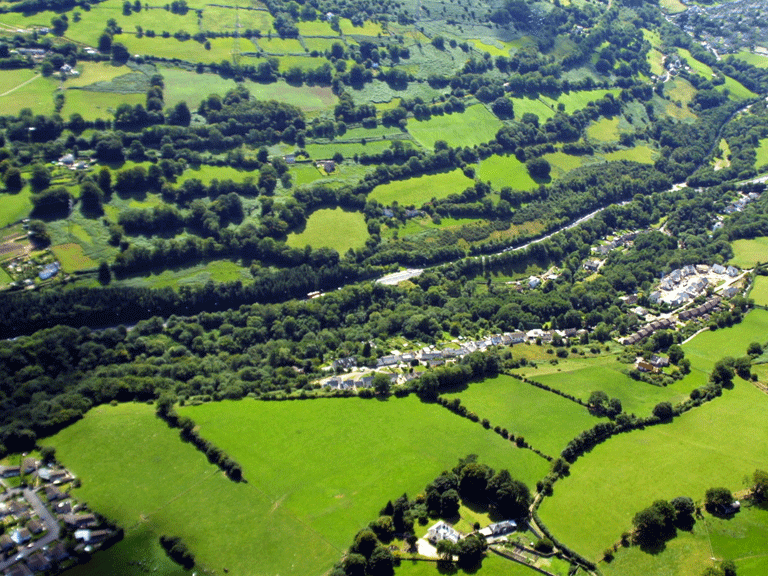Clydach Gorge
009 Maesygwartha and Rhonos-uchaf Enclosed Valley Side

HLCA 009 Maesygwartha and Rhonos-uchaf Enclosed Valley Side
Varied and rationalised agricultural landscape; industrial farms and farm buildings; gentry villa with associated gardens; non-conformist chapel with manse.Back to Map
Historic Background
The historic landscape area of Maesygwartha and Rhonos-uchaf Enclosed Valley Side comprises an area of post-medieval enclosure, which has seen development and rationalisation following the industrialisation of the area. Changes in the field pattern of the area are noticeable between the Tithe of 1840 and the 1st edition OS with an irregular fieldscape of small fields giving way to regular medium-large enclosures. The area is under mixed ownership by the mid-19th century, although it is dominated by land held by the Clydach Iron Company. An area of late enclosure is indicated adjacent to Craig-y-gaer, with the draining and improvement of rough open-mountain during the latter part of the 19th century.
The area includes the early 19th century villa of Pant-y-Beiliau (Listed Grade II), of three bays and two storeys with a porch on Ionic columns and set within gardens. Also notable is Bethlehem Baptist Chapel, Maesygwartha (dated 1830; Listed Grade II)), its interior largely unaltered, the chapel is set alone with its Manse and caretaker's cottage. Of rubble ironstone construction the chapel has a fine entrance front of two-storeyed composition, with round-headed windows above flanking an oval one, segment-headed windows below flanking a round-headed doorway.
Historic Landscape Characteristics
Maesygwartha and Rhonos-uchaf Enclosed Valley Side is chiefly characterised by agricultural enclosure, which has seen rationalisation throughout the 19th century and is characterised by varied, but today predominantly regular enclosure pattern of hedges and hedge banks. The buildings of the area include farms enlarged during the 19th century in response to increased local demands from an increased industrial population. Some farms such as Maesygwartha were enlarged under the auspices of the Clydach Iron Company itself. The other main characteristic is provided by gentrified farmhouses, such as the Villa at Pant-y-Beiliau within its garden setting.